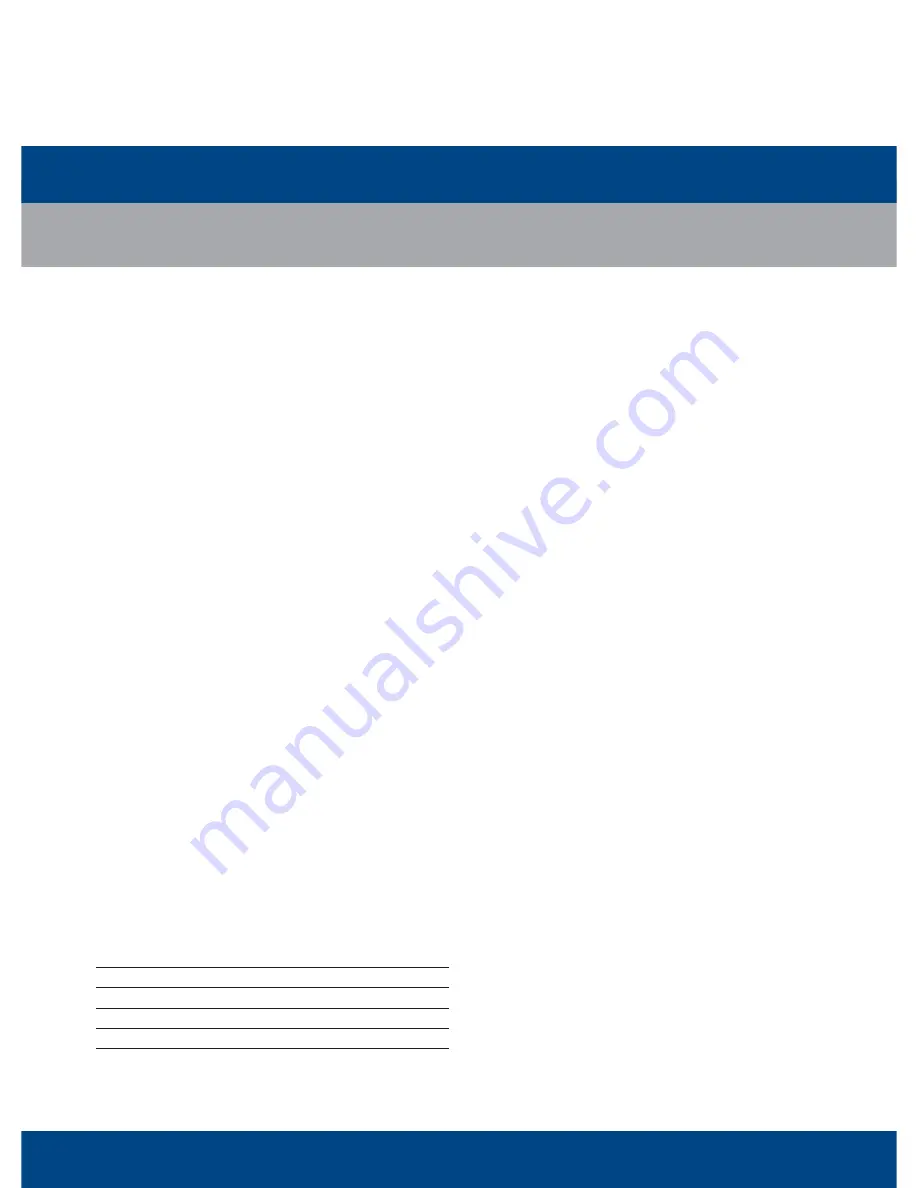
7
ZB
Series
2. Compressor Internal Protections
2.1 Internal Pressure Relief Valve:
Models ZB15- ZB48 has internal pressure relief valve, which open at a
discharge to suction differential pressure of 375 to 450 psi. This action
will trip the motor protector and remove the motor from the line.
Models ZB58 - ZB114 do not have internal pressure relief valves. To ensure
safe operation, a high pressure control must be used in all applications.
The high pressure control should have a manual reset feature for the
highest level of system protection. Maximum cut out settings are listed
in
Table 1
If the compressor is fitted with a Rotalock valve the high
pressure switch MUST be connected on the compressor side of the valve.
Compressors require a low pressure control for loss of charge protection.
If allowed to go undetected, loss of system charge will result in
overheating and damage to the scrolls and floating seal. Prolonged
operation with low charge will result in decomposition of the oil that
might require complete system replacement. Minimum cut out settings
are listed in
Table 1
. The low pressure cut-out, if installed in the suction
line to the compressor, can provide additional protection against a TXV
failed in the closed position, a closed liquid line service valve, or a blocked
liquid line screen, filter, orifice, or TXV. All of these can starve the
compressor for refrigerant and result in compressor failure. The low
pressure cut-out should have a manual reset feature for the highest level
of system protection. If a compressor is allowed to cycle after a fault is
detected, there is a high probability that the compressor will be damaged
and the system contaminated with debris from the failed compressor and
decomposed oil. If the compressor is fitted with a Rotalock valve the low
pressure switch MUST be connected on the compressor side of the valve.
2.2 Internal Scroll Temperature Protection
Events such as loss of charge, condenser fan failure, or low side charging
with inadequate pressure will cause the discharge gas to quickly rise.
Excessively high discharge gas temperatures would affect the scroll
compressor reliability. To prevent damage to scroll compressors ZBKQ/E
scroll compressors are built- in with internal scroll temperature protection.
Compressor models ZB15-ZB48 incorporate a thermo disc which is a
temperature-sensitive snap disc device located at the scroll discharge
port. It is designed to open and route hot discharge gas back to the motor
protector thus removing the compressor from the line.
Compressor models ZB58-ZB114 models incorporate ASTP feature
(Advanced Scroll Temperature Protection). ASTP feature will cause the
scrolls to separate and stop pumping but allow the motor to continue to
run. After the compressor runs for some time without pumping gas, the
motor protector will open.
Depending on the heat build up in the compressor, it may take up to two
hours for the motor protector to reset.
2.3 Motor Protection
For the models with a motor protection code “
F
”, an internal line break
motor protector is located in the center of the Y of the motor windings.
This protector disconnects all three phases in case of an overload or
over-temperature condition. The protector reacts to a combination of
motor current and motor winding temperature. The internal protector
protects against single phasing. Time must be allowed for the motor to
cool down before the protector will reset. If current monitoring to the
compressor is available, the system controller can take advantage of the
compressor internal protector operation. The controller can lock out the
compressor if current draw is not coincident with contactor energizing,
implying that the compressor has shut off on its internal protector. This
will prevent unnecessary compressor cycling on a fault condition until
corrective action can be taken.
Application Guide
Table 1
Pressure Setting Recommendations
Model
ZB15-ZB48
ZB58-ZB114
Control Type
Low
High
Low
R22
1.3Kg/cm
2
28.7Kg/cm
2
1.3Kg/cm
2
R404A/R507
1.2Kg/cm
2
31.88Kg/cm
2
1.2Kg/cm
2
R134a
0.3Kg/cm
2
23.9Kg/cm
2
0.3Kg/cm
2
























